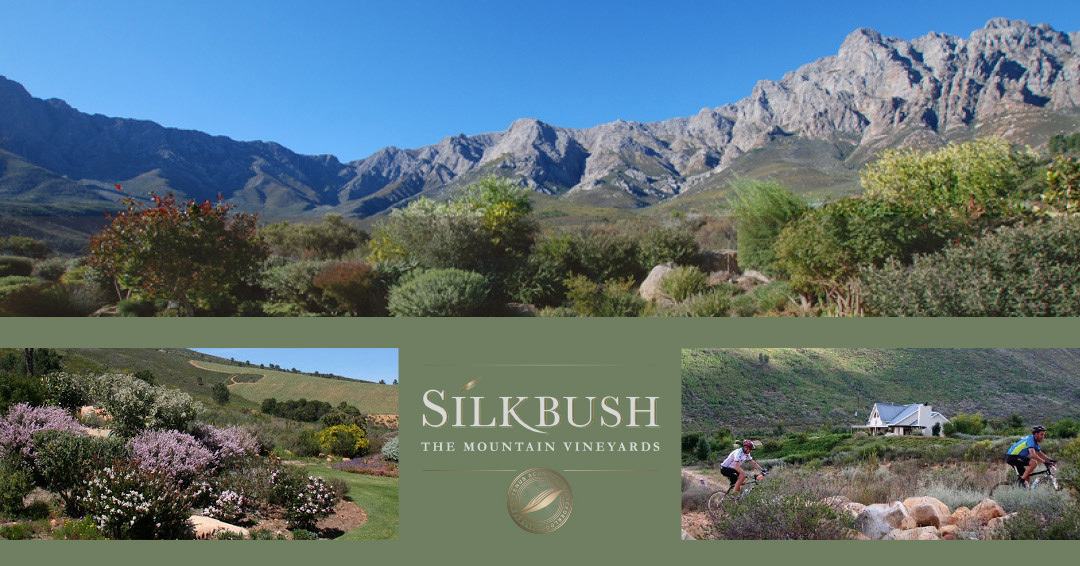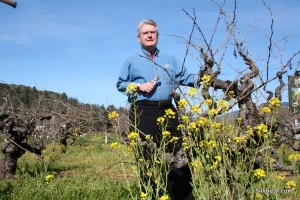While most who visit a South African vineyard/wine website will expect strictly “cheering for the home team,” we are a little different. This website is all about Silkbush which is 12 years old, however, you may not know we also have a larger and longer established operation in Napa and Sonoma Counties in Northern California (NorCal) . We have approximately 700 acres in NorCal, versus 215 under vine at Silkbush. Our annual harvested tonnage runs about 3,000 tons in NorCal, versus 1,200 metric tons at Silkbush, or 10% more, in comparable 1,320 English tons. (We are constantly converting from hectares to acres; metric tons to English tons; liters to gallons.) If the measurements were not confusing enough, the seasons are reversed as well! In California, we usually begin harvest in early September, and it’s complete most years by late October/early November. Chardonnay and Pinot Noir used in sparkling wines are harvested slightly earlier. In the Western Cape, the earliest grapes usually start being picked in late January, with the harvest in full swing by February, continuing through March, and sputtering to a close in early/mid April. While February is quite hot (think July/August in the USA), by March the weather is usually glorious. March/April are wonderful times to visit the Cape
Returning to Kenwood, Sonoma County, CA, where this post is being written, the 2012 wine grape growing season was, quite honestly, as close to PERFECT as you get in farming. Compared to 2011, which had a chilly summer, and rain during the harvest, 2012 was deemed a “Classic” wine growing year. Frost was almost a non-issue for most growers and the summer was warm with very few heat spikes. Wine grapes, incidentally, are like people; they like warm, but not really hot days, and cool evenings. Photosynthesis (the real farmers tell me) starts shutting down in the low 90’s (Fahrenheit not Centigrade) so the plants then go into survival mode, and higher temps are not beneficial. High temps drive down grape acids, drive up sugar, and the grapes become unsuitable for high quality wine long before they are fully ripe. That’s why the best grape growing areas, worldwide, are usually influenced by a body of water or by a mountainside location, where most nights are cool. Knowing this, we purchased former fruit orchards with these benefits in the Russian River Valley of Sonoma and Napa Counties in the 1970’s, and we did essentially the same in the year 2000 in South Africa.
In Sonoma, we farm exclusively in the “middle reach” of the Russian River appellation, largely with Chardonnay and Pinot Noir, and just a bit of Sauvignon Blanc. Further west, the fog is too pervasive to get “cool weather” grapes matured; further inland, the fog burns off early and it’s too hot for Chardonnay and Pinot Noir. Many people find this hard to believe but it’s much like zip codes and property values. There’s a massive difference between property prices in Beverly Hills and Watts, despite there being relatively close together in Los Angeles. In Napa, we grow grapes in two valleys (Chiles and Wooden) both parallel to and just east of Napa Valley proper. Our principal production is Cabernet Sauvignon, with much smaller amounts of Merlot, Syrah, Cabernet Franc, Petit Verdot, and a few other blenders in the spice rack. At Silkbush, we have 11 different cultivars (varieties), but predominantly Cabernet and Syrah. It is chiefly (93%) a red grape vineyard, but we are also getting quite high quality whites from Sauvignon Blanc, Semillon, and Viognier in some protected area. Being in the mountains, and decidedly cooler, most of our reds take at least two weeks longer to mature. Frequently, our grapes are just about the last loads into the wineries before they close for the season.
Because farming is inherently risky and unpredictable, our basic stance in both countries is to lower risk since we can’t eliminate it. The first step is to grow top quality grapes that are desired by multiple wineries. In California, we were growers for 24 years, and then became a principal partner in White Oak Winery. Today, 85% of our grapes are still grown for approximately 20 other wineries. In South Africa, about 50% of our grapes are delivered to some five branded wineries, and the other 50% go to a wholesale winery (Wabooms) where we are minority owners. As the acknowledged best vineyard among the Wabooms members, we are getting the best prices they can afford to pay and our wines are kept separate. We also can purchase our finished wine, further mature it with oak and time, and have it bottled at an independent bottling facility. This is how we produce our export Lions Drift and domestic Silkbush brands of Pinotage, Syrah and Viognier.

